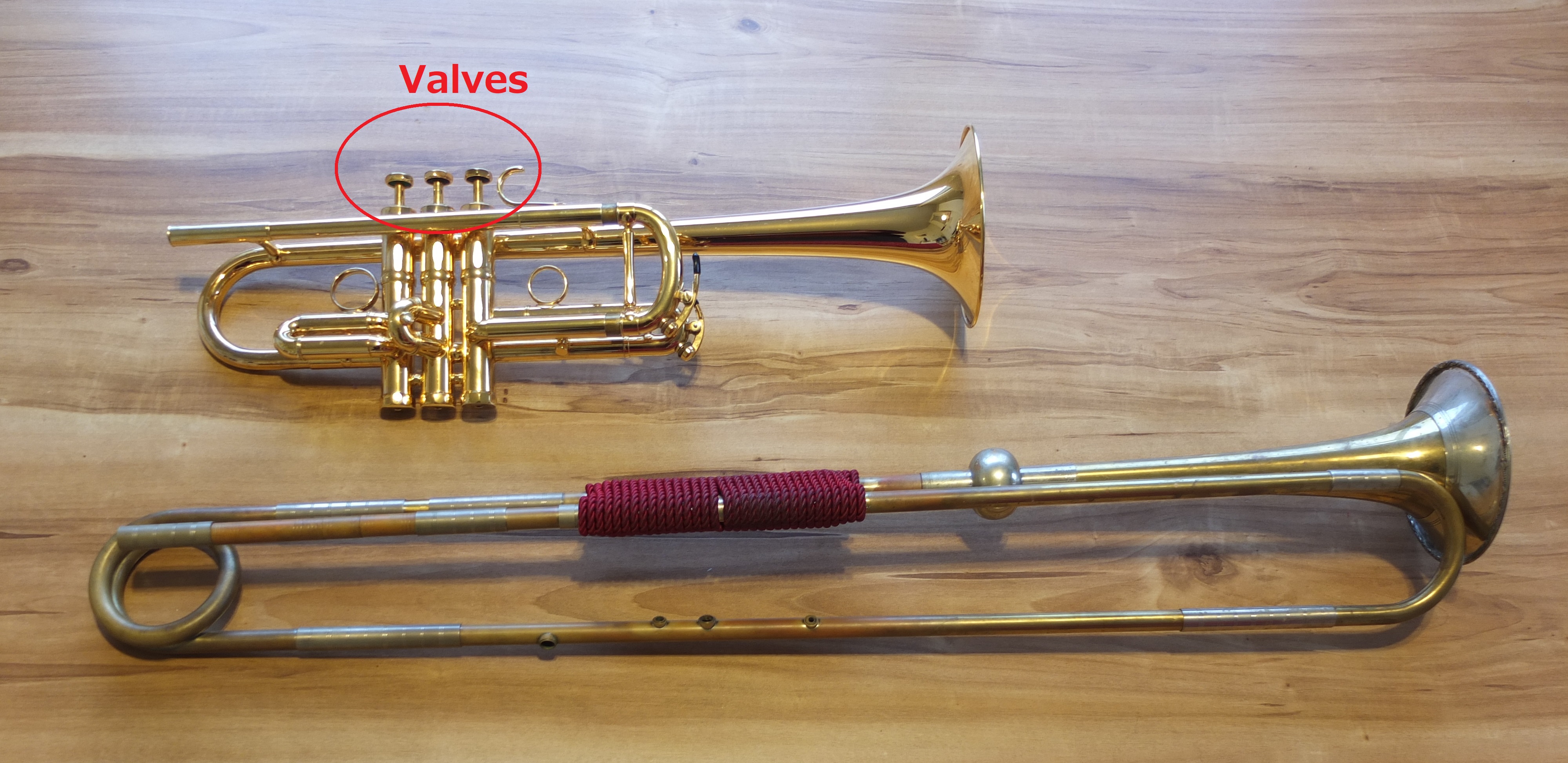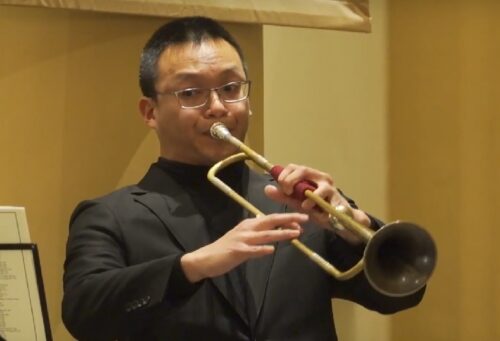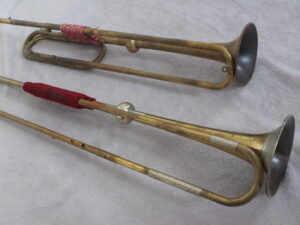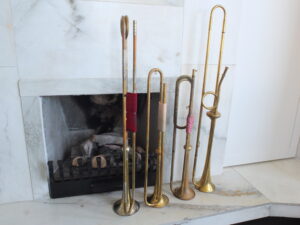Today, we would like to introduce Danny’s specialty: the baroque/natural trumpet!
What is a baroque trumpet?
Many of us, especially for music learners from our home country region, started our music education on modern instruments for classical music. Let’s take for instance, the piano. We learn to play different pieces from different musical periods all on the piano. However during the Baroque era (the time of Bach and Handel etc.), pianos did not exist. The main keyboard instruments then were the harpsichord and the organ.
This brings us to introduce an increasingly popular way of making music: Historically Informed Performance Practice (HIPP). This is where the musician applies the appropriate style and technique of the related era to their performance, as well as using historical instruments (or copies) from that period.
The baroque/natural trumpet is the trumpet which was used mainly in the Baroque era and also for HIPP nowadays.
※There is an ongoing discussion about the naming system of the baroque trumpet and the natural trumpet. There are opinions that say that both are same thing, and others see them as two separate things. We will discuss this issue another time, but here in this article, we would like to first show the differences between the baroque/natural trumpet and the modern trumpet. To make it simple, we will use the name “baroque trumpet” for now.
How is it different from the modern trumpet?
Let’s check out the difference in appearance, have a look below! Tada-!

As you can see, the lengths are strikingly different, as well as the presence/absence of valves. What does that mean?
First, we need to explain that the trumpet is basically just metal pipe(s). Both baroque and modern trumpets can produce different notes from a certain length of pipe (based on the harmonic series). Let’s consider the notes possible on both instruments at fixed lengths below:


From the images above, it looks like the longer baroque trumpet is able to produce more notes compared to the shorter modern trumpet. But the truth is the opposite! This is where the valves come in. Pressing down valves on the modern trumpet changes the length of the pipe of the modern trumpet (total of 7 different lengths!), and this allows the modern trumpet to produce any note within physical limitations.
Compared to that, the lack of valves on the baroque trumpet means it is limited to the notes shown above. No notes means no notes.
Some notes cannot be played! What does the trumpeter do?
Not to worry! Composers back then were well-aware of the capabilities of the trumpet, and they avoided writing the missing notes in the trumpet part.
However, there were special cases where the composer had an extremely good trumpeter in his orchestra and that trumpeter was able to play some of those missing notes. We now know that it is possible, and baroque trumpeters nowadays also practice to be able to play those notes. We will talk more about it in a future post.
What is the difference in sound?
The modern trumpet is designed to project the sound forward out of the bell (more direct), whereas the sound on the baroque trumpet tends to feel it projects more towards the side (less direct). This difference is very obvious when using the trumpet in a small chamber music setting, for example in the combination of soprano, trumpet and basso continuo (bass section).
In that setting, the trumpeter using the modern trumpet is often asked to stand far back or play super soft because of its directness. If not, the audience will usually only hear the sound of the trumpet. Furthermore, the trumpeter cannot express themselves comfortably if they are forced to play soft. However, this is almost not a problem with the baroque trumpet. Its sound, being less direct, is often described to have a milder or sometimes even tender quality compared to the modern trumpet, and the trumpeter can stand right next to the singer, and both can still perform freely.
When was it used?
The first recorded use of the baroque trumpet in western music was in the 1500s. Its usage continued all the way until late 1800s when the modern trumpet with valves finally took over everything. It was quite a long time, and the baroque trumpet was not only used in the Baroque era.
To understand how the baroque trumpet was used in Western art music, we have to start explaining closer to the beginning of its history (few thousand years ago). The first forms of trumpets were made out of animal horns or conch-shells, and could only play one or two different notes. The main purpose then was to make a harsh and unnatural sound to chase away evil spirits and disturb enemies. Eventually the function evolved to include invoking friendly gods and communication (especially in war and hunting). Here is a fun tidbit: there were recorded instances where an army with loud trumpets could trick the enemy into believing that the army was much larger than it actually was, and some battles were even won because the enemy ran away from the “larger” army!
1500s
Improvement in technology allowed for better trumpets to be built, but in 1500s the notes used were still limited and mainly in the low register. For example:

The music above is from the 1st piece from the music notebook for trumpet of Heinrich Lübeck (1598). We can see that only the notes C, E and G are used, and mainly in the low register. Perhaps you can also imagine that this was used as a signal of some sort.
In the next few decades, further development in the design of the trumpet (shape of the bell and mouthpiece for example), together with trumpeters developing better technique allowed easier playing of the high register where more notes are available. The trumpet became a much more melodic instrument like the example below. (Sounds like an angel’s trumpet⭐️)
From Girolamo Fantini’s book (1638):

High Baroque(1680〜1750)
By the time of the High Baroque period (c.1680-1750, the time of Handel, Bach, Telemann, Rameau, Vivaldi etc.) trumpet playing flourished and was frequently used in sacred, orchestral and solo works of the mentioned composers. The trumpet was under the spotlight, so to speak.
Classical era
This, however, changed with the evolution of music styles in the next period (Classical era). Trumpets ended up being mostly used in orchestral compositions as harmonic reinforcement and fanfare-like passages (similar to 1500s). This was because baroque trumpets with one fixed length/key cannot keep up with quick key changes that the Classical era brought about, and also there was a diminishing supply of capable trumpeters.


